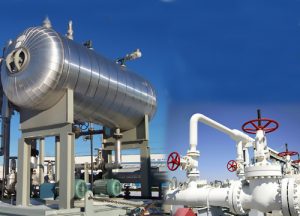Gas Pipeline to boost gas exports to Egypt.

Israel plans to build $200m pipeline to boost gas exports to Egypt. The project is expected to boost Israel’s gas exports capacity by up to five billion cubic metres per year to Egypt.
Israel is reportedly looking to construct a new natural gas pipeline to Egypt, with an estimated investment of $200m, in the wake of surging demand for supplies globally.
The proposed project is expected to boost Israel’s natural gas exports capacity by three to five billion cubic metres per year to Egypt. Israel and Egypt are holding talks on possible cooperation in the supply of natural gas. One of the options being studied, following a request by Egypt for further natural gas supplies, is an onshore gas pipeline.
Planned to be commissioned within 24 months, the new onshore pipeline will connect the natural gas grids of the two countries through the north of the Sinai Peninsula.
Currently, approvals are being sought from local authorities for the pipeline route. The project will be owned by Israel Natural Gas Lines. The project is also expected to help in boosting LNG export from Egypt to Europe and Asia.
Israel is currently supplying five billion cubic metres per year of natural gas to Egypt from its Tamar and Leviathan offshore gas fields, via a subsea pipeline as part of a 15-year supply contract between the countries.
Israel and Egypt are planning to construct a second subsea pipeline, which will supply LNG plants of Idku and Damietta in Egypt. The fuel would be further re-exported to Europe and Asia.
By 2028, Israel is expected to boost its export capacity to eight billion cubic metres per year following the expansion of the Leviathan field and improvement of existing infrastructure.
